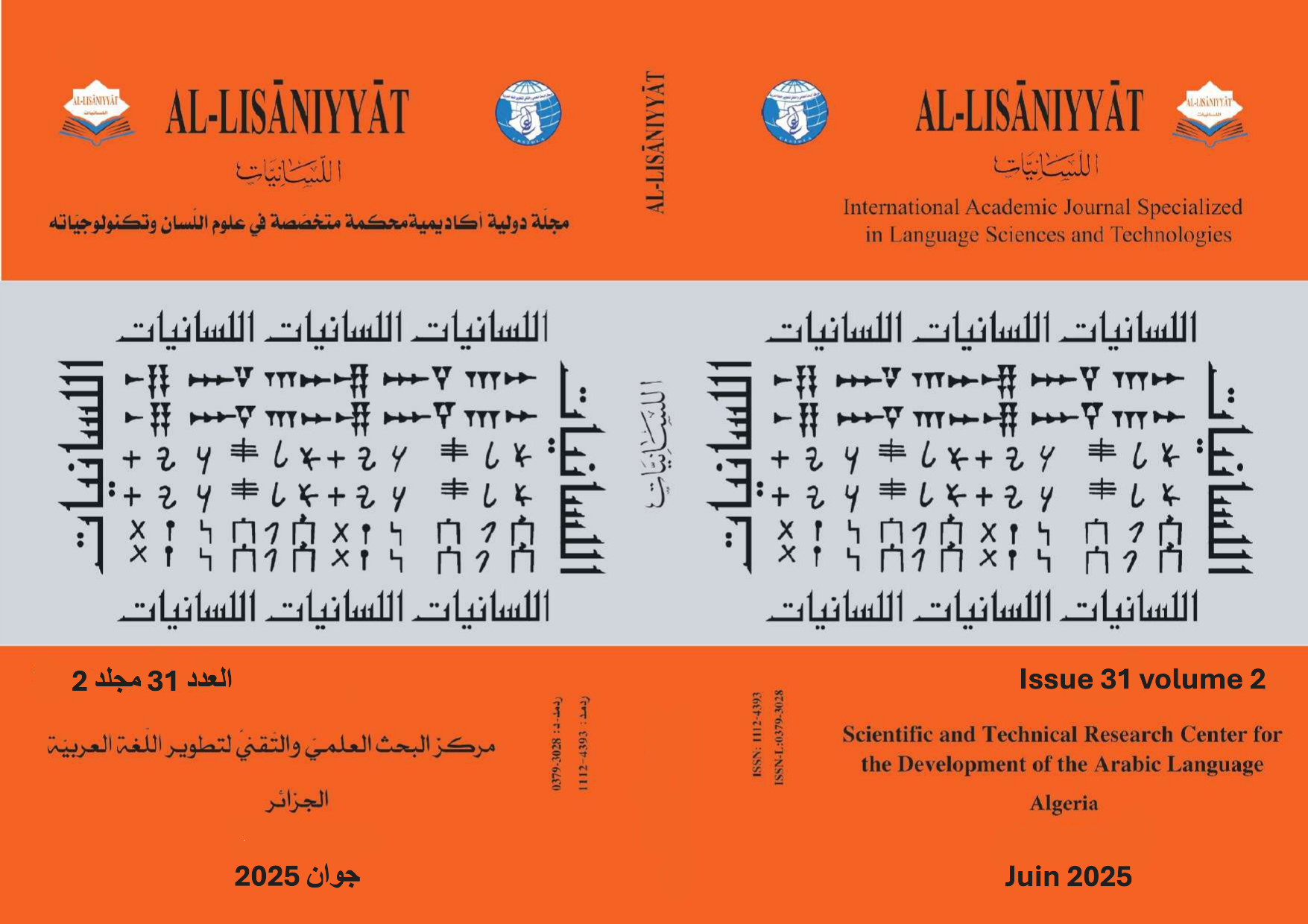La réduction des voyelles dans l'arabe parlé Wahrāni
##plugins.themes.bootstrap3.article.main##
Résumé
Cette étude examine le processus phonologique de la réduction des voyelles dans l'arabe parlé Wahrāni (WSA), un dialecte arabe algérien parlé dans la région nord-ouest de l'Algérie. Le chercheur s’appuie sur des enregistrements et des notes de terrain de discours spontanés de locuteurs adultes, hommes et femmes, natifs et sans troubles de la parole, dans un contexte naturel comme corpus de l’étude. Les résultats montrent que la réduction vocalique (RV) en WSA se produit aussi bien dans les syllabes fermées que dans les syllabes ouvertes. Dans le cas des syllabes fermées, les voyelles se raccourcissent afin d’éviter la formation de syllabes trimoriques. Dans les syllabes ouvertes, les voyelles longues sont raccourcies en raison de la suppression des consonnes codales, ce qui transforme les syllabes de type CVVC en syllabes ouvertes. Or, les syllabes de type CVV ne sont pas acceptées en WSA, d’où l’abrègement de la voyelle, entraînant une perte de mora.
##plugins.themes.bootstrap3.article.details##

Ce travail est disponible sous licence Creative Commons Attribution - Pas d'Utilisation Commerciale 4.0 International.
Références
Abu-Salim, I. (1986), Vowel shortening in Palestinian Arabic: A metrical perspective. Lingua, 68(2-3), 223-240.
Benyagoub, L. (2017). A Moraically-Based Model of the Syllable in Bechar Arabic. Arabic Language, Literature & Culture, 2(2), 40-48.
Bernouss, M. (2007). A moraic approach to syllables: evidence of Moroccon Arabic. Iranian Journal of Language Studies (IJLS), 1(3),155-170
Bouhadiba, F. (1988). Aspects of Algerian Arabic Verb Phonology and Morphology. Unpublished Doctoral Dissertation, University of Reading.
Brame, M. (1970). Arabic Phonology: Implications for Phonological Theory and Historical Semitic. Unpublished Doctoral Dissertation, Massachusetts Institute of Technology.
Broselow, E. (1976). The phonology of Egyptian Arabic. Unpublished Doctoral Dissertation. Amherst, MA: University of Massachusetts.
Broselow, E. (1992). Parametric variation in Arabic dialect phonology. In E. Broselow, M. Eid,& J. McCarthy (eds.),Perspectives on Arabic Linguistics IV.Papers from the Fourth Annual Symposium on Arabic Linguistics, (pp.7-45). Amsterdam: John Benjamins.
Chomsky, N and Halle, M. (1968). The Sound Pattern of English. New York: Harper and Row.
Eid& J. McCarthy (eds.), Perspective on Arabic Linguistics II: Papers from the SecondSymposium, (pp. 1-54). Amsterdam: John Benjamnins.
Hayes, B. (1989). Compensatory Lengthening in moraic phonology. Linguistic Inquiry, 20, 253-306.
Hayward, K. (2000). Experimental Phonetics. Harlow, England: Longman.
Hyman, L. (1985). A theory of Phonological Weight. Dordrecht: Foris.
Kambuziya, A.K.Z. (2007). Vajshenasi: Rouykardha-ye Gha’ede-bonyad [Phonology: Rule-based approaches]. Tehran: Samt.
Kenstowicz, M. (1994).Phonology in Generative Grammar. Blackwell publishers: Cambridge, Massachusetts.
LaFond, B. (2024). Indo Latin vowel weakening in phonetic perspective. European Linguistics, 1-21. doi:10.1163/22125892-bja10032.
McCarthy, J., & Prince, A. (1986). Prosodic morphology. MA: University of Massachusetts, Amherst and Brandeis University. Rutgers Center for Cognitive Science (RuCCs) technical report, 32
McCarthy, J., & Prince, A. (1990, January). Prosodic morphology and templatic morphology. In Perspectives on Arabic linguistics II: papers from the second annual symposium on Arabic linguistics (pp. 1-54).
Myers, S. (1987). Vowel shortening in English. Natural Language and Linguistic Theory, 5(4), 485–518.
Nash, C. M. (2005). A phonetic and phonological approach to stress in Sinhala verbs, Santa Barbara Papers in Linguistics.
Sadeghi, A.A. (2001). Tahavol-e pasvand-e haselmasdarazpahlavi be farsi [The evolution of abstract suffix from Pahlavi to Persian]. Masa’el-e Tarikhi-e Zaban-e Farsi [Historical issues of Persian]. Tehran.
Sarmış, E. E., & Canalis, S. (2021). High vowel shortening in Turkish. In Proceedings of the Workshop on Turkic and Languages in Contact with Turkic (Vol. 6, pp. 5060-5060). https://doi.org/10.3765/ptu.v6i1.5060
Sheredi, N. (2015). Prosodic Processes in Two Dialects of Libyan Arabic: A Harmonic Serialism Approach (Doctoral dissertation, University of Essex).
Watson, J. C. (2002). The phonology and morphology of Arabic. Oxford University Press, USA.
